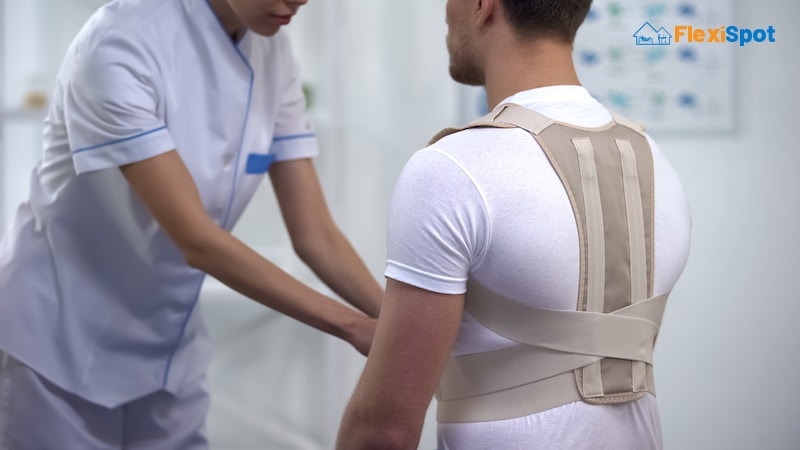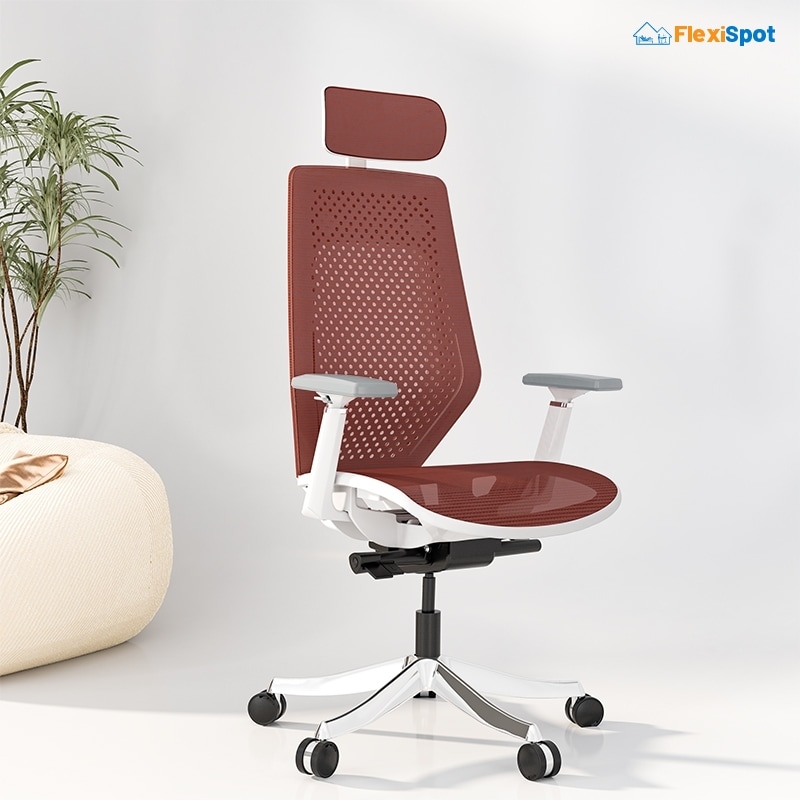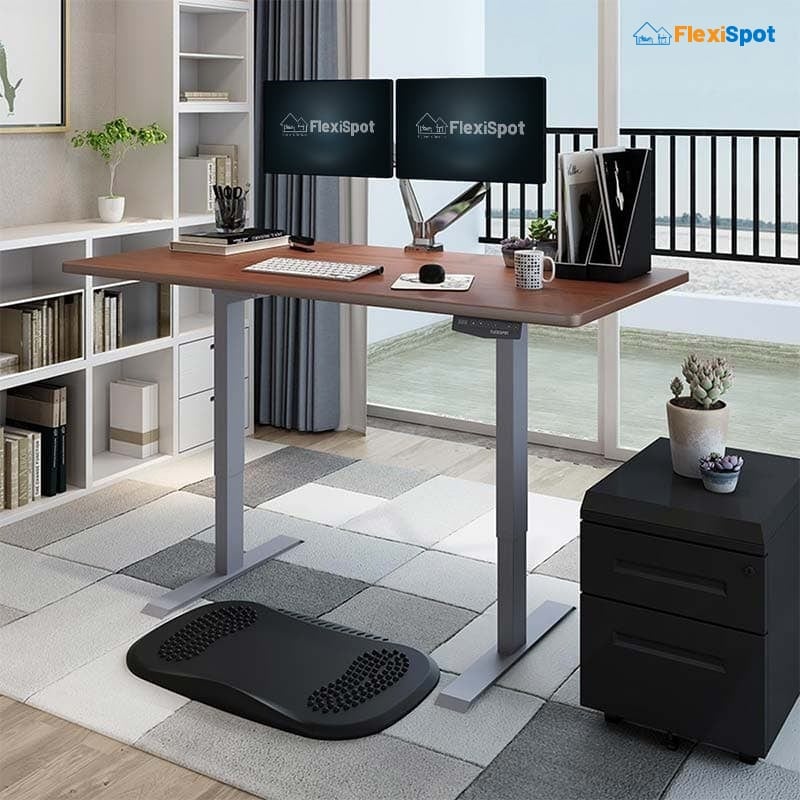We are used to sitting in the wrong posture, failing to realize that it is not the right way to sit. Many people sit with their backs curved and shoulders hunched during busy work. While you might think that you are comfortable sitting in that manner, your posture is to blame for all the back, shoulder, and neck pain that you are experiencing. For reasons such as back pains, people have invented posture correctors that have been used over the years to help fix your posture. Posture correctors include back support belts, shoulder posture braces, and specially designed posture correcting shirts. Wearing posture correctors has helped people to improve their postures, and as we all know, a healthy posture reduces discomfort and pain in your back and muscles.
Experts over the years have come up with research that has proven the effectiveness of posture correctors and how they aid in changing posture. Posture correctors have been designed to target muscle imbalances by guiding your body to use the correct muscles for a healthier posture. Doing this can alleviate the pain and discomfort from overstretched and tight muscles. However, a study done in 2019 found that posture correcting shirts were not so practical for musculoskeletal pain. It means that some posture correctors might be more beneficial than others. It also means that more research about the efficacy of certain types of postural support is necessary.
However, back posture correctors have been known to help straighten the back. Several researchers encourage people to use back posture correctors to fix their posture, among other tools that could help fix posture.
What should you look for in a back posture corrector?
When determining the proper posture corrector, you should consider some of the following things.
Effectiveness
While narrowing down your search to get the suitable posture corrector, look at the ones that focus on critical areas because they might increase the product's effectiveness. The most important areas include the neck, lower back, cervical, and thoracic joint. You need to know what your weak areas are, and you can do this by looking at your posture from your waist up to find the origin of your slouch. You need a back posture corrector with lumbar support if your back aches.
Comfort
You need a breathable material that feels good on your skin and does not lead to chafing. It should not contort your body into positions that are not natural or that limit your body. It won't help if it is uncomfortable because you will avoid using it.
Ease of use
It would help if you had something straightforward to use, not one that requires a Ph.D. to operate. You need to be able to put it on, adjust it and be able to take it off without relying on someone else’s help to lift it off of you or tighten a strap.
Price
You should look at your budget and the features involved in the posture corrector to know what might help you and what price it might cost. Typically, posture correctors with a tech component tend to be more expensive than other types.
How does it look?
You should look at how it looks under your clothing. You do not want your corrector to be seen outside your clothing; that's not such a pleasant look.
Since you now understand a thing or two about posture correctors, let's see the benefits of back posture correctors to understand further if you need to use them. The benefits include:
Correct posture
The first and primary benefit of using one of these is correcting your posture. When you bend your head forward while working and your posture gets slumped, scapular protraction takes place. It is a poor posture, and that is when a posture corrector such as a back posture corrector comes in. as said earlier, its objective is to prevent the rounding of shoulders and improve the overall posture.
It makes you aware of the posture you need
Using the incorrect posture is so common that we hardly realize it's wrong. A posture corrector can help fix this and make you more aware of the posture you need to avoid health problems like back aches. It does this by making you more mindful of the correct manner of standing and sitting. Posture correctors limit your motion because they restrict your motion when your body transitions in the wrong posture. You cant recline while wearing a back posture corrector, for instance, because your body and back will be restrained from getting into the wrong position. In short, you will be reminded when you need to fix your posture once you wear a back posture corrector.
Much as the benefits are reasonable, we can’t deny that there are also the disadvantages of using a back posture corrector, such as:
They can be uncomfortable
Posture correctors are not so comfortable to wear. Having to wear a brace or belt to support your back is not so comfortable because it tightens your body and causes a great deal of discomfort. The discomfort can usually increase when you are forced to adjust the posture corrector to a position you aren't used to, but you need to for it to work. Several people that get used to back posture correctors wear them because they need to and not because they enjoy wearing them.
Risk weakening your core muscles
Back posture correctors have an issue of weakening core muscles. Correctors can disturb you when your upper back posture deviates from the normal. You might compromise your lower back posture to restore your posture to the correct position. The fact that posture correctors can’t target the entire spine leads to weakening your core muscles.
After understanding the benefits and drawbacks of posture correctors, especially back posture correctors, we can conclude that you should use them if necessary because they can be helpful in certain circumstances. However, alternatives might be more helpful and efficient, especially for your back support. The best part is that they can help with back support and other parts of your body, unlike posture correctors that focus on a specific body part. You can fix your back, neck, shoulders, and spine all at the same time. The alternatives include:
1. Ergonomic office chairs
It doesn’t matter whether you sit in an office for so long or live a sedentary life back at home; you have probably experienced back pain at some point in your life. Ergonomic office chairs have been designed over the years to provide lumbar support and assist in posture development which is an excellent alternative to back posture correctors. Lumbar support is necessary for these chairs because it helps to curve your lower spine inwards until it reaches the belly button. It fills the void between the lumbar spine and the seat, providing comfort and excellent lumbar support. Lumbar support in ergonomic chairs helps prevent slouching and hunching, which generally lead to back pain.
Flexispot Ergonomic Chair Pro OC14 has a soft plastic close to a user's back and can adjust the strength of the back for its use depending on the body's weight. Among other benefits, it has an armrest and headrest that are very helpful in preventing joint pain, fitting the cervical vertebrae, and reducing pressure created from sitting.
2. Standing desk
Standing desks have been proven over and over to help in maintaining posture. It is an excellent ergonomic that can help ease the strain you might experience while using a computer or standing and sitting. If you stand regularly, the correct posture will start becoming second to nature, reducing the compression on your spine that you might get from sitting. Sitting for extended periods has been known to place pressure on your back and discs, often leading to neck, shoulder, and back pain. It is why standing desks were invented, to help alternate between standing and sitting, reducing the pain in your back.
Back pain is, however, not necessarily caused by sitting. It's also not something you have to live with for the rest of your life. An alternative to back posture corrector is standing desks and chairs with lumbar support as they encourage you to change your posture and remedy your back pain. Flexispot has various standing desks that you can pick from, each with better features that can help focus on your back pain and overall health.
You should check your body posture to use your standing desk correctly. Here are some things you need to do; keep your body, neck, legs, back, head, and torso in a vertical line. Ensure you have placed your monitor at a reasonably healthy distance which means an arm’s length away and below your eye level. Your desk height should ensure your wrists are straight, and your hands need to be at the same level as your elbow. Your arms need to be close to your body also as you type.
Maintaining a good posture can improve your overall health and wellbeing and strengthen the muscles that support your spine. It can be done by wearing back posture correctors or alternatives such as standing desks and ergonomic office chairs.




